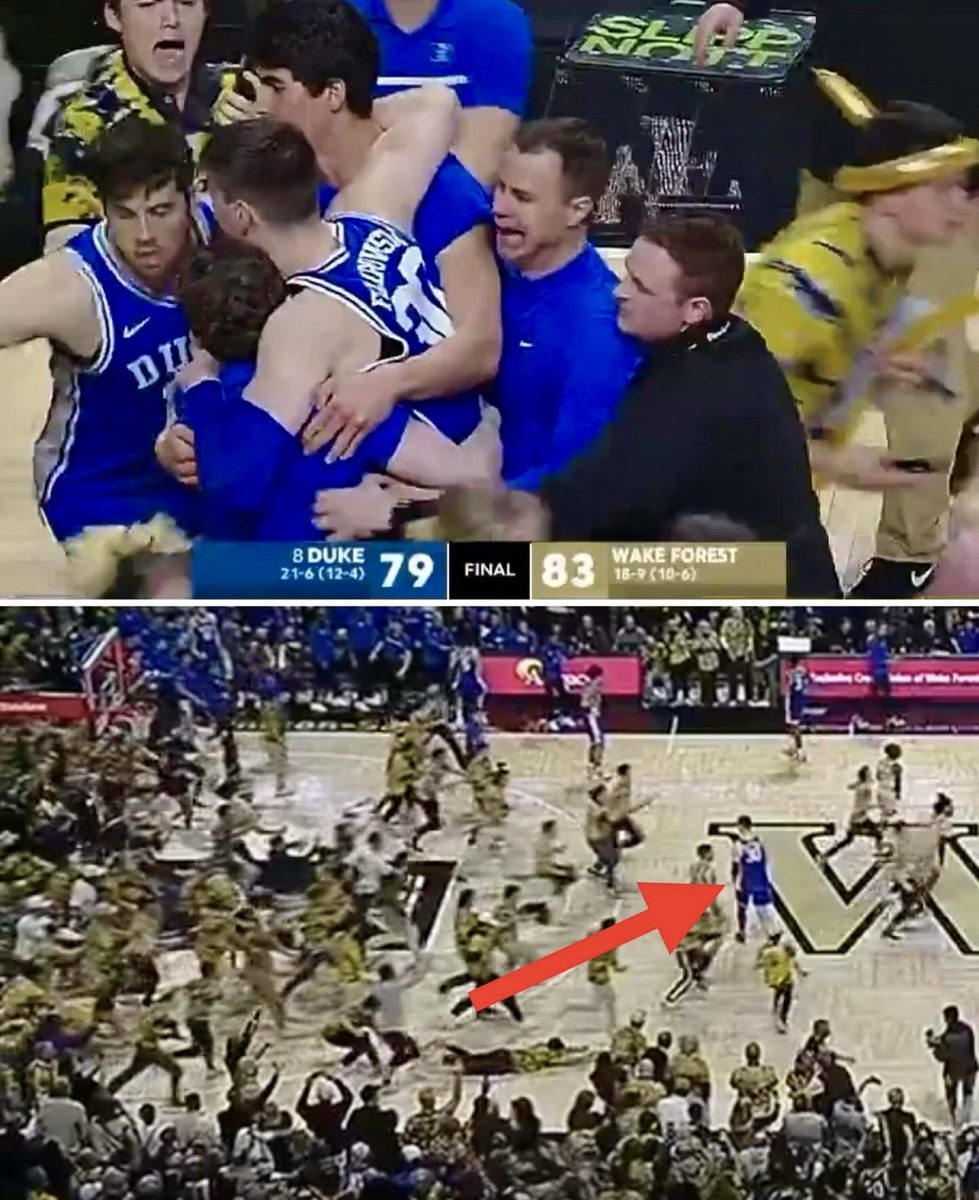It’s time for the NCAA to address field and court storming. The practice in collegiate football and basketball games has increased rapidly over the past couple of years. This year, the practice has come under heavy scrutiny as a result of two separate instances where player safety was compromised due to a court storm. The first was when University of Iowa women’s basketball star, senior Caitlin Clark, collided with an Ohio State University fan after the Hawkeyes lost in January. The second was when Duke University men’s basketball player sophomore Kyle Filipowski collided with several Wake Forest University fans after the Deacs topped the Blue Devils in late February. After the incident at Wake Forest, the issue of court storming once again came into the national spotlight. Conferences have attempted to take action, by imposing fines on schools that allow their students to enter the “competition areas.” In late February, Louisiana State University was fined $100,000 for storming the court after upsetting No. 17 University of Kentucky. The Atlantic Coast Conference, the conference Duke and Wake Forest belong to, is one of the only that does not issue fines to schools for rushing the field or court. Fordham’s conference, the Atlantic 10, does issue fines to teams that storm the court following a game.
The issue of player safety is the primary focus of court-storming opponents. Players, especially visiting team members, are caught up in the chaos of a hostile fan base, and that is an invitation for arising problems. Court stormings are inherently chaotic and usually possess little regard for anything other than the celebration of beating a major opponent. I don’t believe that’s necessarily a bad thing — it’s a part of what makes college sports so special. But court stormings have gone too far. They’ve become far too commonplace, which takes away some of that specialness and mystique. But here’s the problem: there’s no good solution for solving the issue of court storming. It’s one of those things that’s just always going to happen. Imposing a fine on the school seldom works, as we’ve seen court stormings persist despite conferences threatening schools with fines. It’s a numbers game — if you have several thousand students who are all hyped up after a big win and they decide they’re getting on the court, there’s not much to be done about it. Trying to place a monetary penalty on schools puts an undue burden on the security and game operations teams by either requiring them to stop the actions of students or risking the whole athletic department being fined.
Court stormings cannot effectively be banned, and that’s why efforts should be focused on making them safer, limiting the risk to opposing teams as much as possible. As fans, we love to see a court storming — it gains publicity for a school, it brings excitement to the fanbase and it can increase student engagement with teams. But for the athletic departments of many schools in Division I, it represents a substantial safety hazard and a potential financial disaster. Schools should be required to have extra security on hand when playing games that could result in a court storming, particularly against rival opponents or nationally acclaimed teams. Ensure that before the floor is flooded with students, all of the opposing players have cleared the danger zone — half court. This failure is what led to both the injuries to Clark Filipowski.
It’s very easy to say “ban court storming,” but it’s incredibly challenging to implement. There is no perfect solution that schools and conferences will agree to. You will certainly have teams such as Power Five schools that commonly get court-stormed when they are beaten on the road that will advocate for tough penalties. Then you’ll have the little guys who are anxious for the opportunity to get that big win over a big-time program and put their team in the national spotlight. It is an issue that will incite much debate over the offseason. Still, I believe that a total ban would be difficult, if not impossible, to implement. Energy should be spent making meaningful changes to ensure that player safety is placed above all else.





































































































































































































